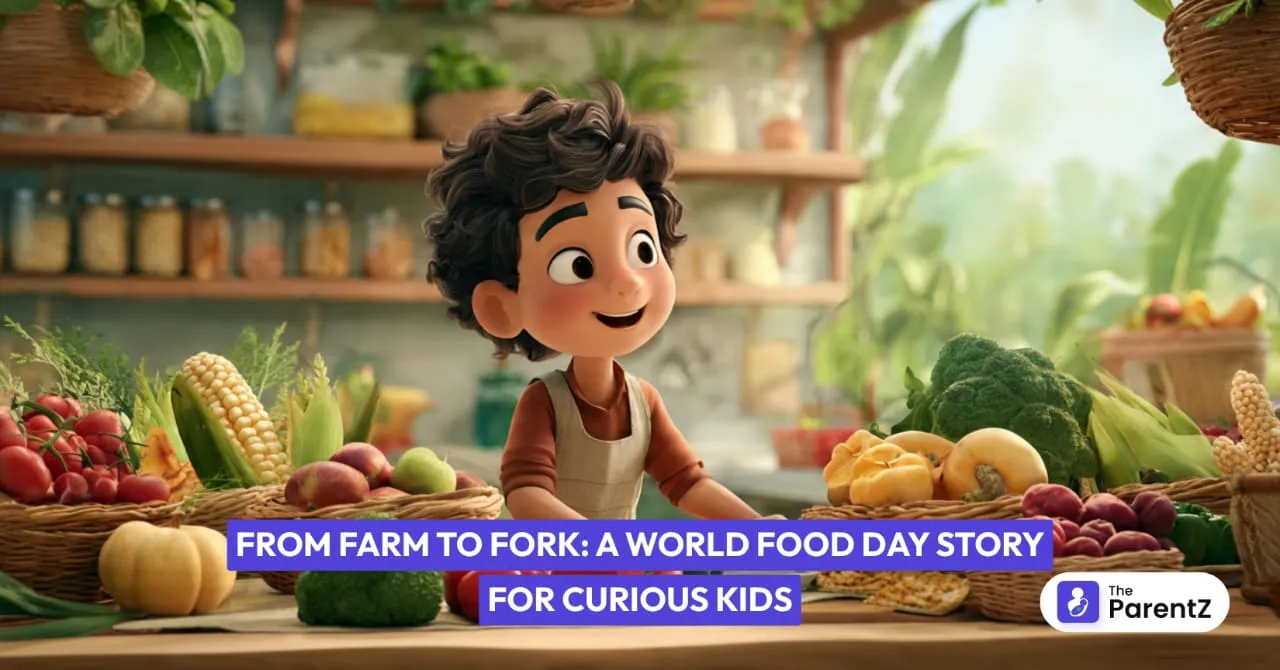“Mom, where does my chapati come from?”
That one simple question can open a whole world for a curious little mind. World Food Day is the perfect time to help kids explore this journey, from a tiny seed in the soil to the delicious food on their plate.
The Magic Journey of a Grain
Once upon a time, in a sunny field, there was a tiny wheat seed. A farmer gently planted it in the soil and gave it water and love. The seed slept in the cool earth until one day, pop! It pushed out a tiny green shoot. Rain and sunlight helped it grow taller each day, as it waved happily in the wind alongside hundreds of friends in the field.
When the wheat turned golden, the farmers harvested it, tying big bundles of grain. Tractors rumbled through the fields, and big trucks carried the grains to a mill, where they were ground into soft, white flour.
And that’s where the magic of your chapati begins!
Mom brings the flour home, mixes it with water, and rolls out round dough that turns into warm, soft chapatis. The wheat that once danced in the field now sits on your plate, ready to fill your tummy.
From Cows to Cups, and Gardens to Bowls
Kids can have fun learning how every bite tells a story. Here’s how you can turn food time into discovery time:
- Talk about where milk comes from: You could say, “Our milk begins on a farm where cows are fed and cared for every day.” Show them pictures or videos of how milk is collected, cooled, and packed before reaching your fridge.
- Explore vegetables and fruits: Take them to a local market or garden. Point out how tomatoes grow on vines, how carrots come from under the soil, and how bananas hang in bunches.
- Connect farmers to food: Explain how thousands of farmers work daily to grow and harvest crops, even before we think about our meals. Children learn to respect the people behind their food this way.
Create Your Own “Farm to Fork” Story
Encourage your child to start their own World Food Day project. Let them pick their favorite food, maybe rice, mango, or milk, and help them draw or write its story. Use prompts like:
- “What happens first?” (Who plants it?)
- “Who helps care for it?” (The sun, rain, farmer?)
- “How does it travel to us?” (Truck, shop, or kitchen?)
- “How do we enjoy it?” (Cook, bake, share?)
You can even make it a game: while cooking dinner, pause to guess where each ingredient came from. Kids love this game, and it builds patience and gratitude over time.
Grow Something Together
Even the tiniest plant can inspire curiosity. Try growing coriander, mint, or tomatoes in a pot on your windowsill. When children watch a seed sprout, they understand the wait, the care, and the wonder behind their meals. Suddenly, food is not “just from the shop,” it’s a living story.
Conclusion
The journey from farm to fork is more than a science lesson. It’s a gratitude lesson; one that helps children appreciate nature, farmers, and the effort behind every meal.
So, the next time your child asks, “Where does my food come from?” smile and say, “Let’s find out together!”
Happy World Food Day! Here's to curious kids and the amazing journey every bite takes to reach their plates.








Be the first one to comment on this story.